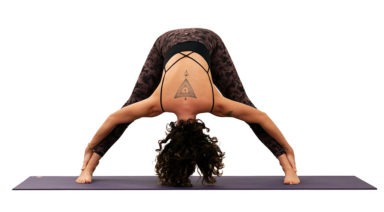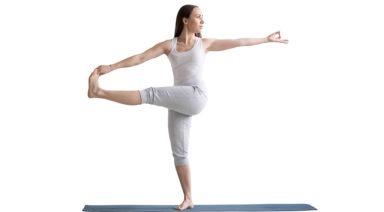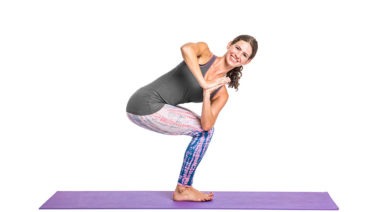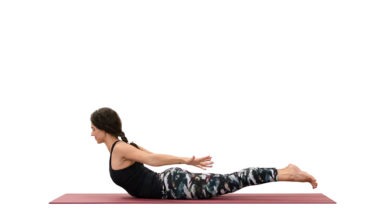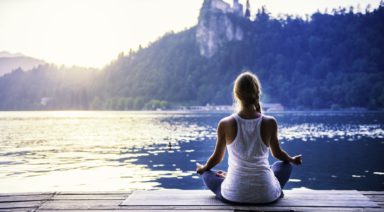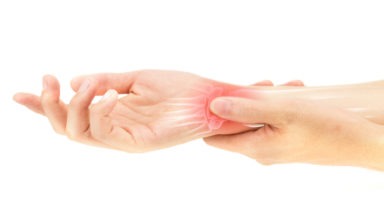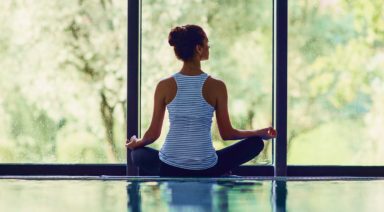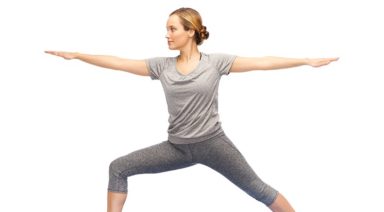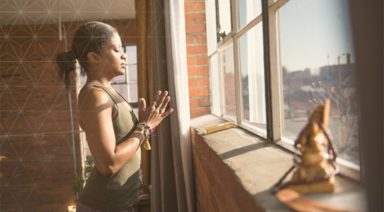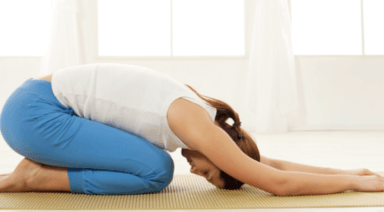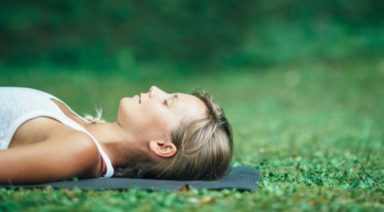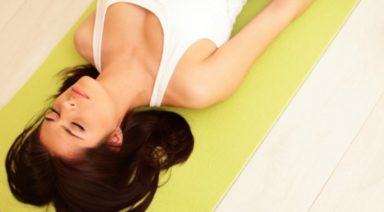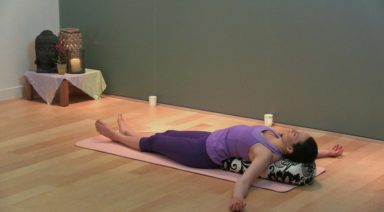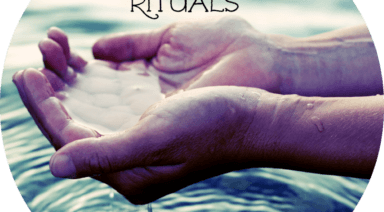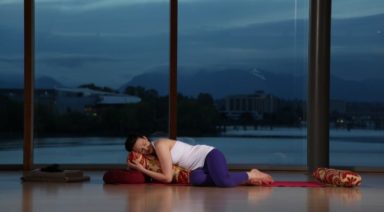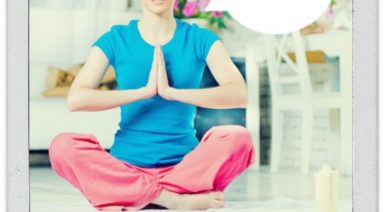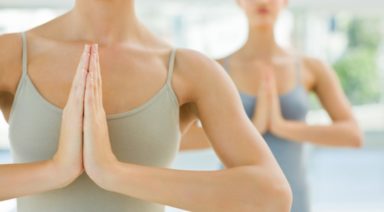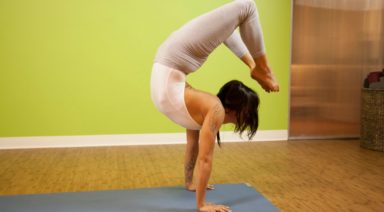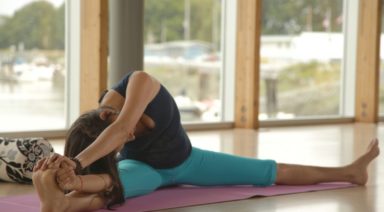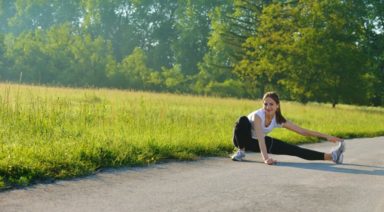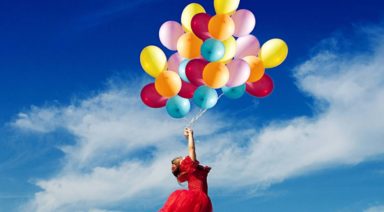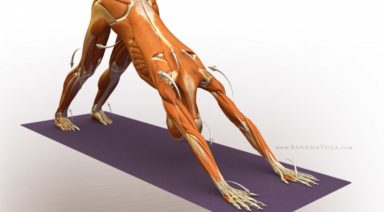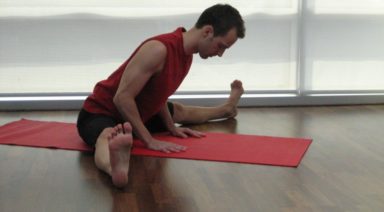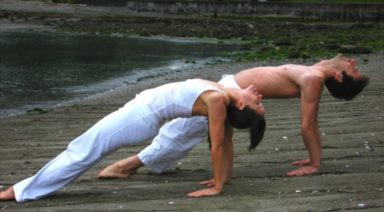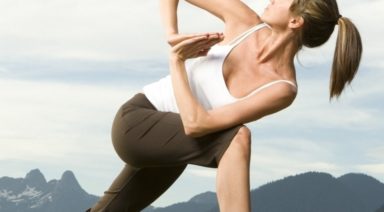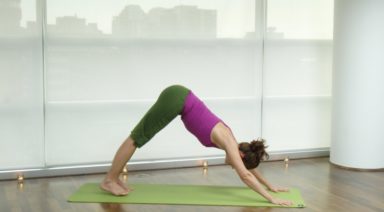Natarajasana: Lord of the Dance Pose
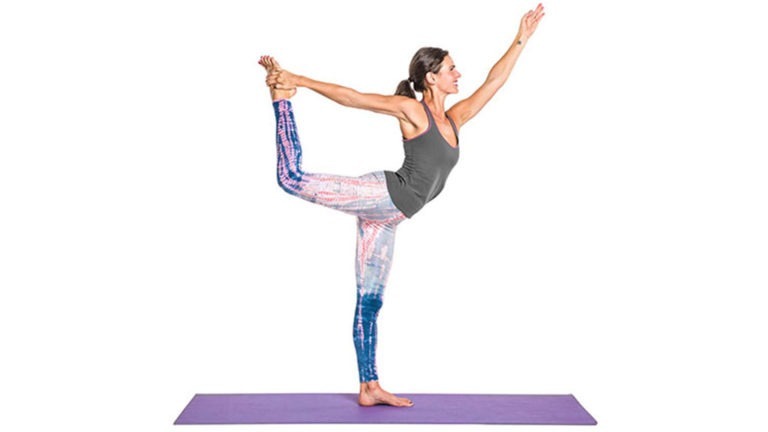
ADJUSTMENTS | BENEFITS | SEQUENCING | SANSKRIT | STEPS
Natarajasana (not-ah-raj-AHS-anna) is a physically challenging, beautiful pose that requires flexibility in the spine, legs, and hips. To practice the pose, use a thoughtful sequence filled with plenty of preparatory poses in order to make sure your body – and mind – are adequately prepared. Regular practice will help develop strong mental fortitude and determined concentration.
Philosophy + Origin
A physical embodiment of King Nataraja, a form of the lord Shiva, lord of the dance pose (also referred to as king dancer pose) is a tribute to this powerful god of destruction. Embracing destruction and even death as part of the cycle of change and growth, this pose is a helpful reminder that no good can exist without evil, no birth without death.
In most depictions of King Nataraja, he is standing on one leg (hence the shape of the pose), gazing over the head of a small dwarf, whose presence represents ignorance. In this way, lord of the dance pose encourages our consciousness to elevate above ignorance, above the common thoughts and misunderstandings that cloud our view. The balance that comes from the pose awakens our understanding that clarity brings steadiness.

ADJUSTMENTS/MODIFICATIONS:
- If reaching back for your foot is difficult, use a strap around your foot to bridge the gap.
- As you work on improving your balance, try practicing this pose with your extended hand on a wall or chair.
- Some styles of yoga teach this pose with chest forward and extended arm reaching straight out in front of the chest.
STEP-BY-STEP:
- Begin in mountain pose. Shift your weight to your left foot and bend your right knee so your right hand reaches back for your right foot. Keep your right kneecap pointed toward the ground.
- Grabbing the outside of the foot is typically more challenging, but it will provide a deeper stretch for your shoulders and will better encourage your chest to stay lifted.
- Option to kick your right foot into your right hand, lifting the foot up and back at the same time. The more actively you use your right leg, the easier it will be to maintain your balance.
- Extend your left arm forward and up, reaching toward the sky.
- Press equally into all four corners of your left foot, paying special attention to the mound of your big toe. Engage the quadriceps muscles of your left leg by pulling the knee cap up.
- Hold for up to 10 cycles of breath. To release from the pose, slowly let go of your right foot, placing it back on the floor returning to standing. Take several deep breaths before repeating on the other side.

PREPARATORY POSES:
- Floor bow pose | Dhanurasana
- Camel pose | Ustrasana
- Tree pose | Vrksasana
SEQUENTIAL POSES:
- Front splits pose | Hanumanasana
- Upward-facing bow pose | Urdhva dhanurasana
- Warrior III | Virabhadrasana III
COUNTER POSES:
- Standing forward bend | Uttanasana
- Eagle | Garudasana
- Standing splits | Urdhva prosarita eka padasana
SANSKRIT:
- Nata = dancer
- Raja = king
- Asana = pose
PHYSICAL BENEFITS:
- Tones and stretches the muscles of the legs and hips.
- Strengthens the arch in the standing foot.
- Improves balance.
ENERGETIC BENEFITS:
- Develops concentration.
- Promotes clarity.
Legal Disclaimer Before participating in any exercise program or using any fitness products or services that may be described and/or made accessible in or through the Gaia Website and/or the Services, you should consult with a physician or other healthcare provider. Read more about Gaia’s Terms Of Use.
Prasarita Padottanasana: Standing Wide-Legged Forward Bend Pose

ADJUSTMENTS | BENEFITS | SEQUENCING | SANSKRIT | STEPS
Prasarita padottanasana (pra-sa-REE-tah pah-doh-tahn-AHS-an-uh) is a big stretch for the hamstrings and inner leg line. With many variations available, this pose is accessible for most practitioners. This is also a great pose in lieu of headstand.
Philosophy + Origin
Prasarita padottanasana has found its way into almost every style of yoga. B.K.S. Iyengar taught several variations of this posture, labeling them as A, B, C, and D. The most commonly practiced variation is prasarita padottanasana A. Prasarita padottanasana B is when the hands are on the hips and the head is lifted off the ground, not resting on the mat. Prasarita padottanasana C is the variation where the hands are interlaced and stretched behind the back and over the head as you fold. In the final variation taught by Iyengar, prasarita padottanasana D asks the student to grasp the big toe on each foot.



